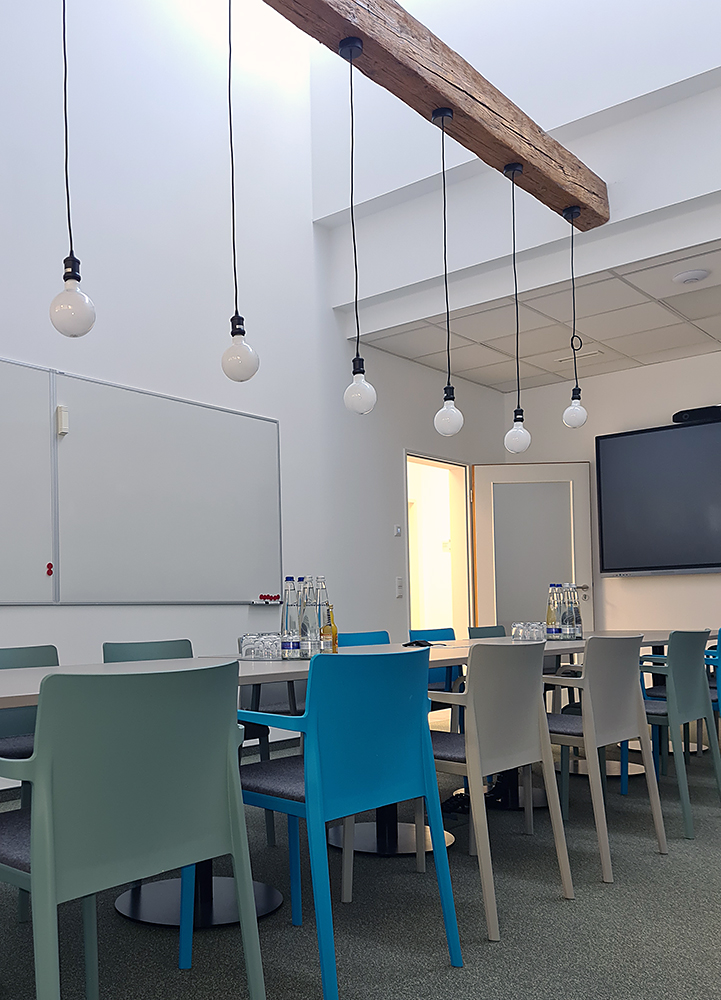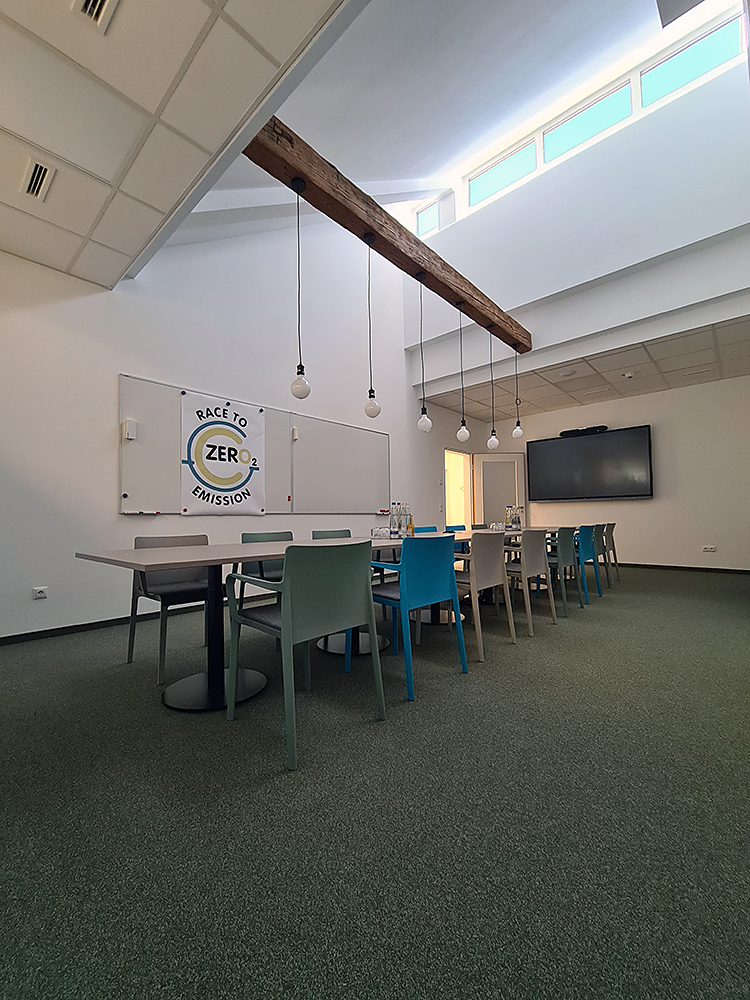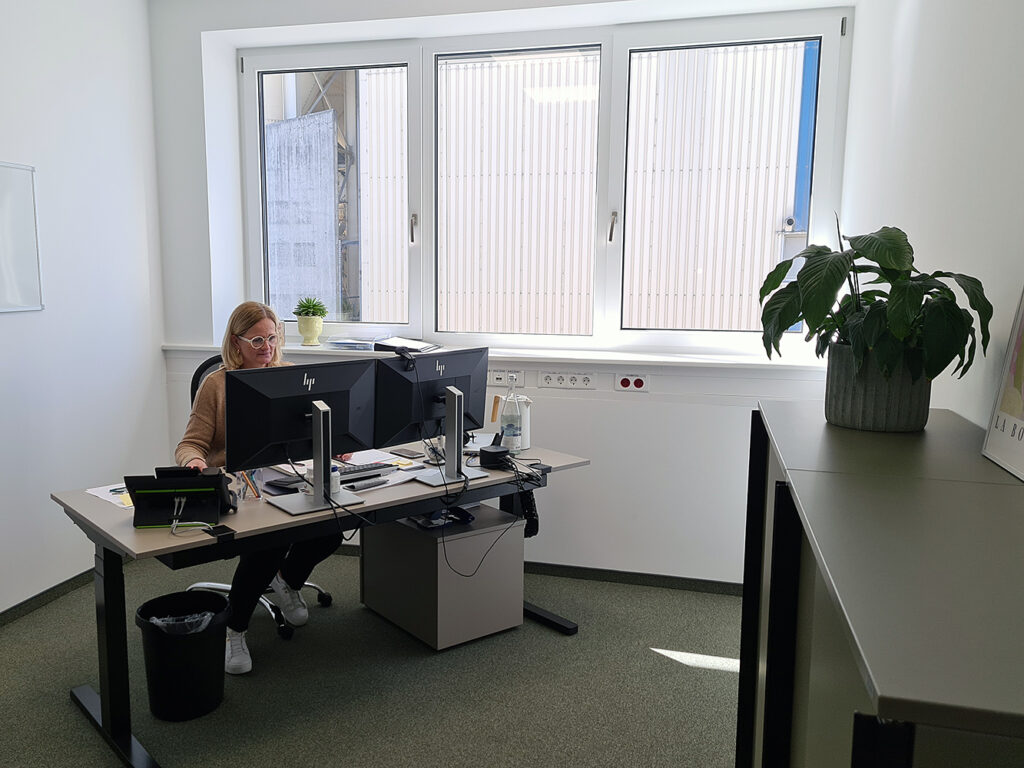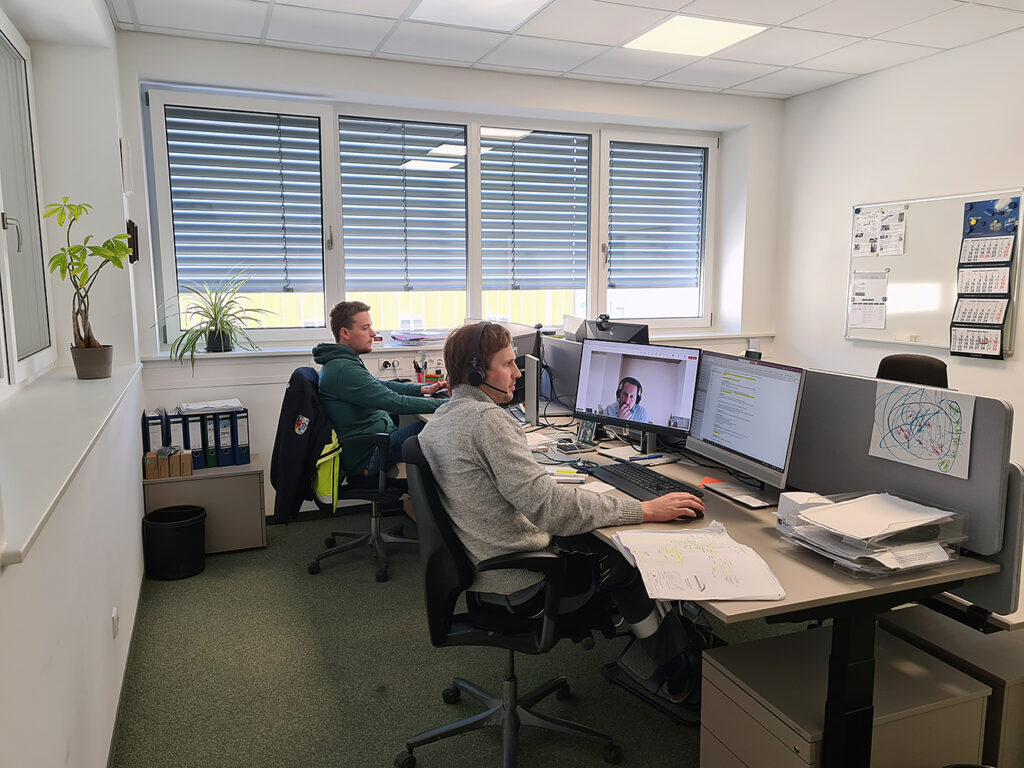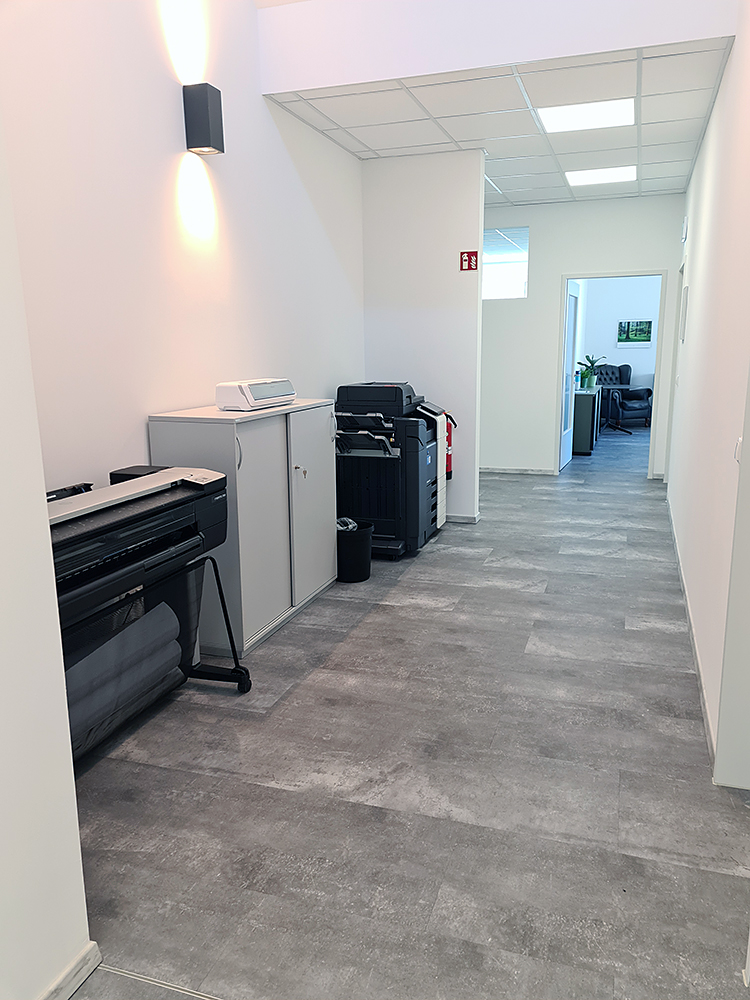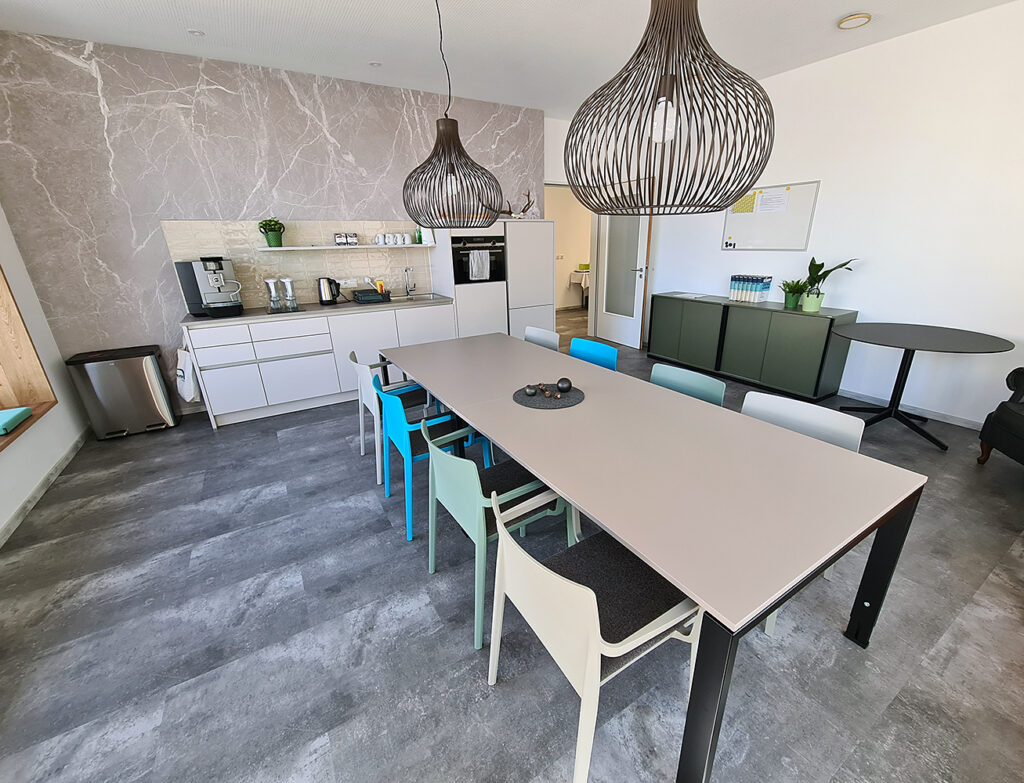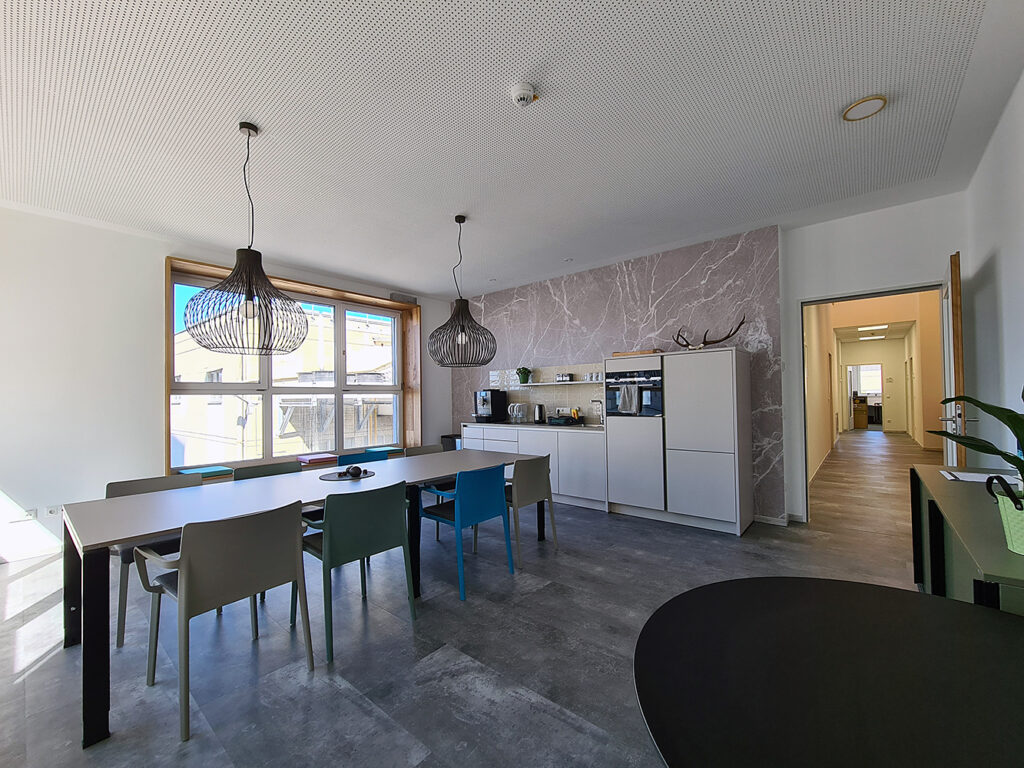New office space for the Net Zero Emission team
Rohrdorf, March 19, 2025 – The Rohrdorf Net Zero Emission team has moved into new premises on the premises of the Rohrdorf cement plant. On a floor space of around 400 square meters, 13 new offices, a spacious communal kitchen and a conference room with modern video transmission technology have been created. The fit-out of an office floor on the upper floor of the vehicle workshop building was completed at the end of January after a seven-month construction period. The team moved in at the beginning of February.
Net Zero Emission Labs GmbH was spun off from the Rohrdorf cement division in 2023. The team consists of specialists from various disciplines, such as project management, mechanical engineering, chemistry, process engineering, environmental engineering and plant engineering, and is leading the decarbonization of the Rohrdorf Group. Part of the Net Zero Emission team works at the Rohrdorf site and part in Gmunden.
Since the beginning of 2025, the Rohrdorf Net Zero Emission team has had a new leader: Dr. Markus Stecher heads up the CO₂ Avoidance – Process Engineering team and, together with his team, is tackling the complex challenge of how to achieve CO₂ emissions of just 600 kg per tonne of cement (currently the average for the Rohrdorf and Gmunden cement plants is 750 kg). Markus Judendorfer is head of the CO₂ avoidance team – Project Management Office. In this role, he is responsible for ensuring that CO₂ reduction and capture projects are implemented efficiently and in a targeted manner. Dr Benjamin Müller-Wildenauer heads the CCUS (Carbon Capture, Utilization and Storage) team and is responsible for the further development of projects for CO₂ capture, conversion and storage. Together, they have the goal of decarbonizing cement production in Rohrdorf by 2038.
“A large part of our work takes place at our test facilities. Regular coordination between the individual teams and the Rohrdorf and Gmunden sites is essential in order to be able to draw reliable conclusions quickly,” says Dr. Markus Stecher. “Thanks to the new rooms, we have the opportunity for direct exchange, but also places of retreat for concentrated work and the evaluation of our experiments.”




